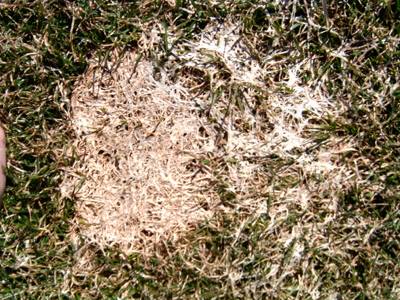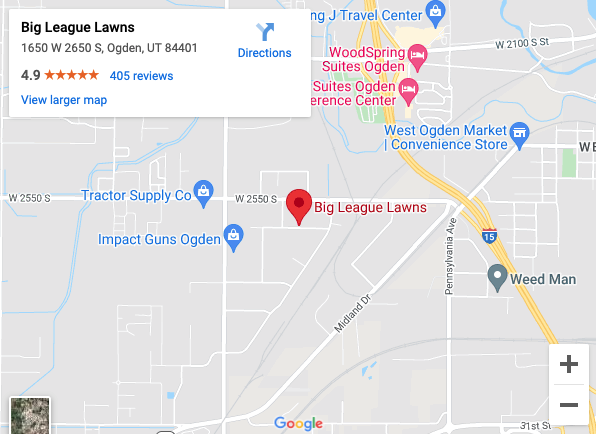The temperatures have risen and the snow has melted. You expect to be greeted by a lush green lawn, but instead, your once beautiful yard looks horrible! What caused this to happen? Is it still alive?
Don’t panic! It’s going to be okay.
Your lawn may have snow mold, a type of fungus that damages and sometimes kills grass, generally in late winter. Snow mold, sometimes referred to as snow rot, is a turf disease that flourishes under wet leaves and snow in the winter months. Snow mold’s damage usually occurs in small circular grayish or pinkish patches, and can take on a web-like appearance. Its damage can be even worse if the snow is allowed to hang around or if layers of wet leaves are allowed to remain on the lawn.

Telltale Signs of Snow Mold
- Circular patches, with rings, tan to gray in color, generally a few inches to several feet across
- Rings generally overlap and are large and irregular
- Grass appears matted and crusty
- Areas where roots and crowns are damaged or totally demolished
How to Prevent Snow Mold Disease
It’s always better and easier to prevent a problem instead of trying to take care of it after the fact. Snow mold is no different. Consider the following tips to prevent the devastating effects of snow mold.
- Follow a balanced fertilization regimen, providing your lawn with the necessary nutrients at the appropriate times throughout the growing season.
- Keep thatch levels below half an inch by using core aeration once a year at a minimum.
- Progressively mow your grass shorter each week as winter approaches working towards a height of 1-1/2 to 2 inches at the last mowing. This can be accomplished by lowering the mowing height a notch each week until the desired height is attained. This is an important step in snow mold prevention to keep the grass from laying over on itself.
- Thoroughly remove all leaves and debris from the lawn before the first snowfall. Snow mold is most likely to occur under leaves and debris where moisture is retained. Leaving leaves and debris on the lawn creates a breeding ground for the disease almost ensuring that snow mold will occur in the spring.
How to Control Snow Mold
If you discover your lawn has been infected by snow mold, take the following steps to eliminate it.
- First of all, take comfort in the fact that snow mold is generally only a cosmetic issue. With proper care, your lawn should be disease-free in just a few short weeks.
- The fungus usually affects only the grass blade at first. If left unattended, it can allow the mold to spread and kill grass entirely. A good fertilizer regimen will help your lawn to “outgrow” the disease by pushing the diseased growth up to a length that will be removed by the mower.
- The very first step you can take to help your grass is to break up any matted down areas of grass using a heavy rake. Rake the area several times from varying directions making sure to remove all areas of matted down leaves, grass, and debris. Removing this material will enable the surviving grass to grow and flourish as the weather provides more favorable conditions. The grass’ new growth will not be inhibited by the matted down leaves and debris.
If you’ve struggled to maintain a beautiful and healthy lawn, our lawn maintenance services are the answer. With our fertilization and aeration services, your lawn is sure to receive the air and nutrients it needs. Contact Big League Lawns today to learn more about snow mold and how we can help you have the lawn you have always wanted!



